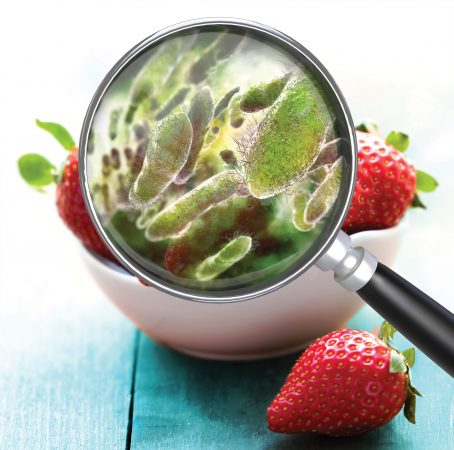
Focus on Food Safety: Climate change increases food safety risks
By Ron Wasik
Food Safety climate change Photo © Giovanni Cancemi/ Adobe Stock
Photo © Giovanni Cancemi/ Adobe Stock Rising temperatures, greenhouse gas emissions and smog and chemical discharges into the atmosphere will increase food safety risks throughout the supply chain.
Unpredictable weather patterns
Weather patterns influence all life forms on this planet. The food supply chain is only a small cog, operating at the mercy of the global weather system. The dramatic climate changes that we are now experiencing in ever increasing frequencies are impacting all life forms and forcing all of us to either adapt to these changes or perish. Our supply chains have adapted to the climatic conditions we have known for the past few decades. The food safety measures we’ve developed are based on these old conditions, but they will likely not be suitable for the future, as climate change forces pathogens to evolve and adapt.
Higher temperatures
Our winters are getting shorter and warmer. While this is a welcome change for many, changing weather patterns is concerning. For growers, drought is probably the greatest concern, but there are other problems too. Warmer and drier weather often improve conditions for plant pathogens that reduce crop quality and produce toxins.
Dust
The amount of dust in our atmosphere increases dramatically when the winter and spring precipitation evaporates, resulting in dry and loose soil and dirt. These airborne particles eventually get deposited in rain or dust. Scientists have shown that airborne dirt harbours a variety of microbial organisms including moulds, yeasts, fungi, bacteria and viruses. The longer periods of drought and elevated temperatures have benefited most forms of microbial life, and this is exposing the entire biosphere to greater and prolonged microbial exposure.
Rainfall
In lower elevations, snow has frequently turned into rain due to warmer winters. Prolonged damp conditions encourage mould growth. Wooden pallets, which in past years, could be stored uncovered outdoors are now growing mould. Unless dried and cleaned before use, wet pallets can bring a variety of potentially hazardous microbes into the plant facility, and end up contaminating everything that comes into contact with them.
Transportation
Prolonged periods of high temperature make it harder to control temperatures of products while in transportation. Delivery companies that mix loads of shelf-stable and refrigerated foods in unrefrigerated trucks risk abusing temperature-sensitive products. It would be wise to use temperature monitoring devices on sensitive products to monitor temperatures when employing unrefrigerated trucks.
Shelf life
Higher ambient temperatures shorten the shelf life of perishable food. Everyone along the food continuum, from farm to fork, will need to enhance temperature control measures to maintain the shelf life of perishable foods.
Ingredient and process changes
Climate change is expected to disrupt supplies of raw materials, forcing processors to use new and different ingredients. This will require revalidation of food safety plans as well as attending to a host of other compliance issues.
Sanitation
Higher temperatures and wetter weather will challenge plant sanitation operations to achieve and maintain the required cleanliness standards. Condensation, infestation, festering garbage, smelly drains, absenteeism, poor water temperature, limited water pressure and time and numerous other sanitation challenges that were once manageable will become nightmares.
Going forward
The COVID-19 pandemic has given us a glimpse into a world under a global threat. Thanks to science and international co-operation, we are slowly resuming life as it was in the pre-pandemic era. The fallout from climate change will not be easy to combat. We all need to take measures to not only mitigate climate change, but also prepare for the impact it will have on virtually everything we do.
Dr. R.J. (Ron) Wasik, PhD, MBA, CFS, is president of RJW Consulting Canada. Contact him at rwasik@rjwconsultingcanada.com.
This article was originally published in the September 2021 issue of Food in Canada.
Print this page